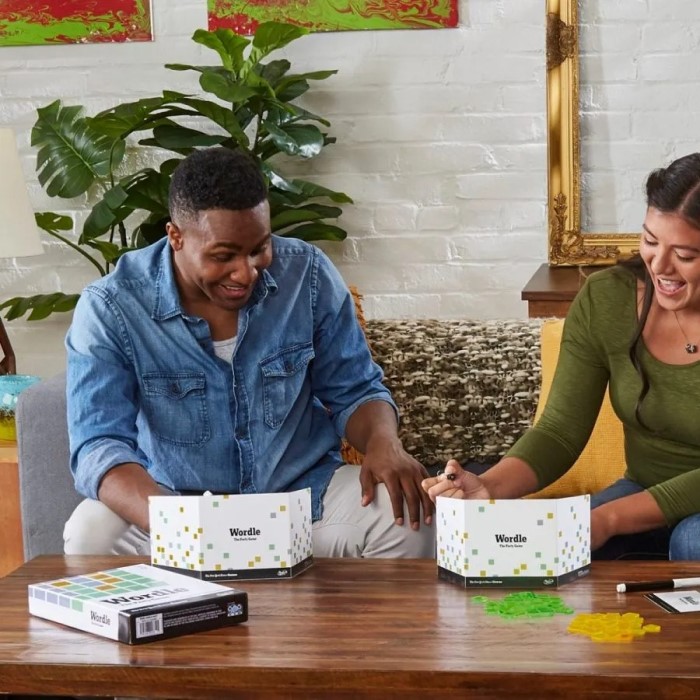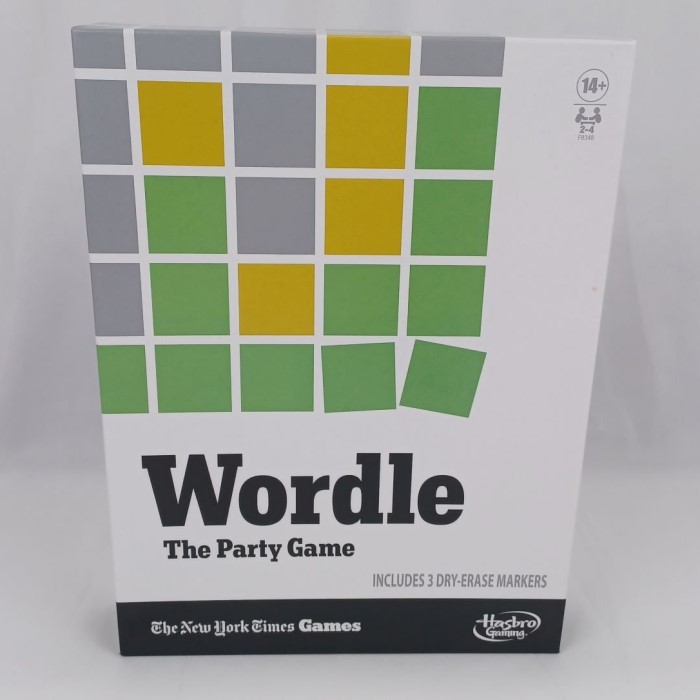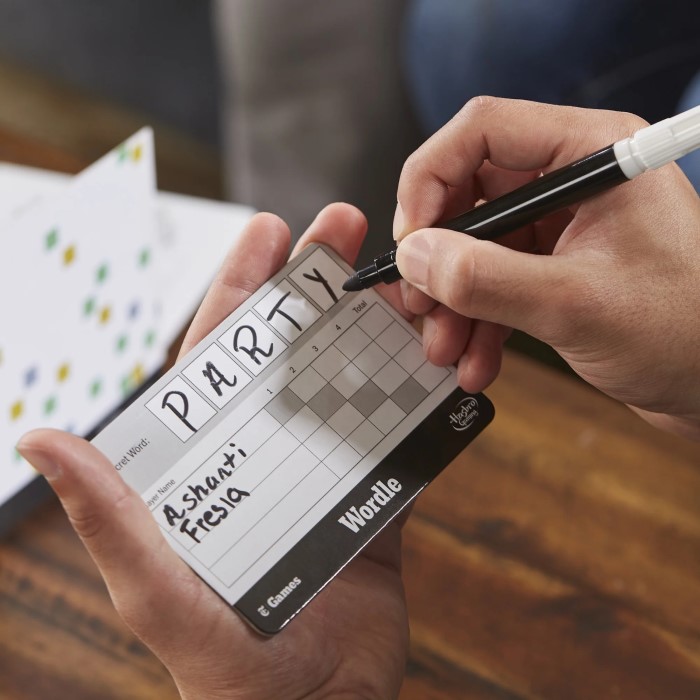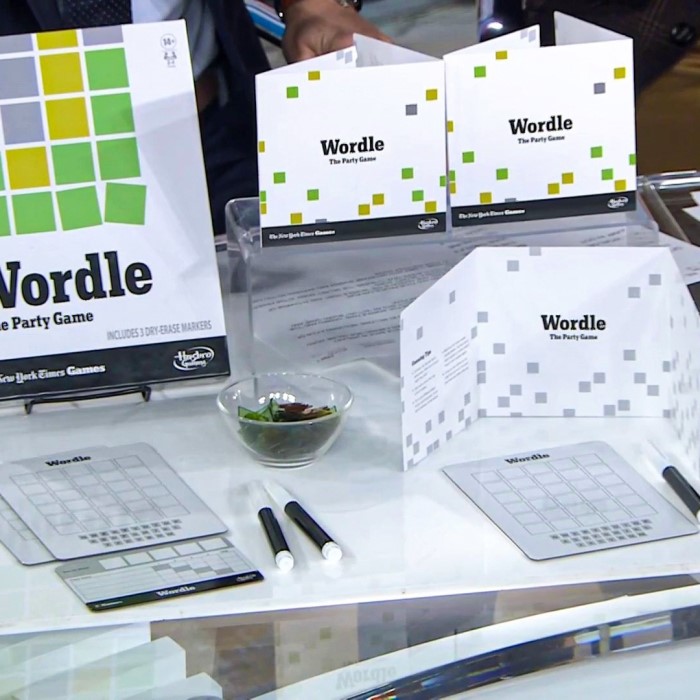What is the Wordle Board Game?
The Wordle board game brings the popular digital word puzzle to life. It turns the online guessing experience into a fun and interactive activity for friends and family. Combining word strategy and deduction, it adds a new dimension to wordplay and social gaming.
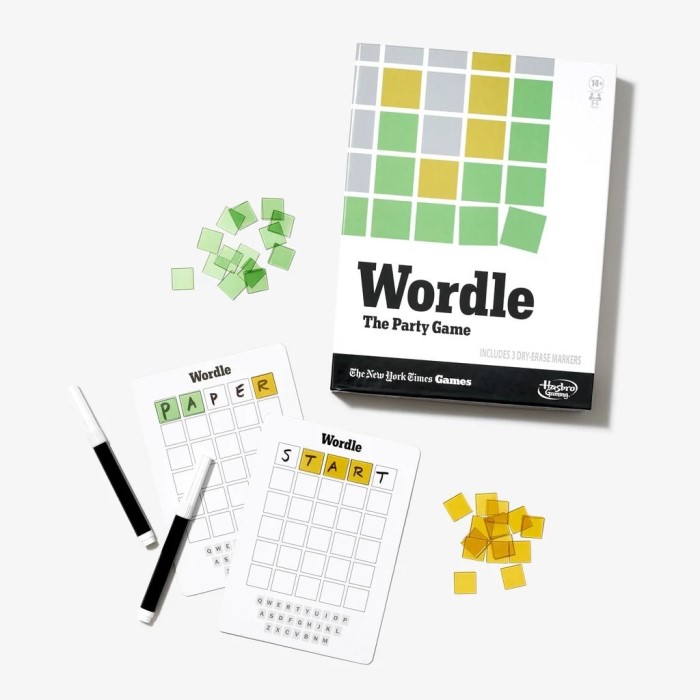
Origins and Inspiration from the Online Version
The Wordle board game is inspired by the viral online word puzzle. The digital version gained worldwide fame for its simplicity and engaging gameplay. Players compete to uncover a secret five-letter word, using feedback on guesses to refine their attempts. This exciting mechanics led to the creation of a physical version for offline play.
The transition to a board game allows Wordle fans to enjoy the game in group settings. It preserves the essence of the original while enhancing it with tactile and visual components. Enthusiasts who loved the online version now have a chance to experience the fun in a whole new way.
Physical Gameplay vs. Digital Wordle
While the core concept remains the same, the board game offers a slightly different experience. In the physical version, players interact using tokens, cards, or tiles rather than typing guesses on a screen. Feedback is given through visual indicators, adding a hands-on element to the game.
Unlike the solitary nature of digital Wordle, the board game emphasizes social interaction. Players can collaborate, compete, or even modify rules for house variations. This makes the Wordle board game a versatile option for gatherings, parties, and casual play.
Another difference is the elimination of daily puzzles. With the board game, players can enjoy unlimited rounds without waiting for the next challenge. This freedom adds flexibility and allows extended play sessions.
Setting Up
Getting started with the Wordle board game is simple. Proper setup enhances the overall experience. It’s important to understand the components and prepare them for optimal play.
Components Included in the Game
The Wordle board game comes with several essential items:
- Game Board – The central component where players place their guesses and feedback tokens.
- Letter Tiles or Cards – Used to display guessed letters and confirmed positions.
- Feedback Markers – Indicate correct letters, wrong letters, or misplaced letters.
- Dry-Erase Board or Pads – Provides players with space to note guesses and track possible answers.
- Instruction Booklet – Includes the rules and optional variations.
These components ensure the physical gameplay stays engaging and faithful to the original Wordle concept. Check to confirm all pieces are included before setting up.
Preparing the Game for Players
Follow these steps to prepare:
- Unpack the Components – Lay out the board, tiles, markers, and accessories for easy access.
- Organize Tiles – Sort letter tiles or cards alphabetically to help players find letters quickly.
- Read the Rules Together – Ensure all players understand basic gameplay and scoring mechanics.
- Assign Roles – Decide who sets the secret word, or alternate roles each round.
- Create a Comfortable Space – Arrange seating and ensure proper lighting for uninterrupted play.
Once the setup is complete, players can dive into the fun and test their word guessing skills. A clear and organized playing area is key to enjoying the Wordle board game fully.
Rules of the Board Game
Understanding the rules is essential for an enjoyable Wordle board game experience. The game focuses on word deduction and strategic guessing, making it both fun and mentally engaging. Here’s a breakdown of how the rules work.
Objective of the Game
The main objective is to guess the secret five-letter word. One player or a group sets this word. The other players must guess it using the least attempts possible. Each guess provides feedback to guide the player toward the correct word. The goal is accuracy paired with the fewest trials. This adds a competitive yet friendly edge to the game.
Feedback markers play a key role here. A correct letter in the right position earns one type of marker. A correct letter in the wrong position earns another. Letters that don’t appear in the secret word receive no marker. This structured feedback helps players refine their guesses systematically.
Turn-Based Gameplay Mechanics
The Wordle board game follows a simple turn-based system. In each turn, players make a single-word guess. Afterward, feedback markers are awarded, showing how close their guess was.
Here’s how the sequence works:
- Player Makes Guess: A player selects a five-letter word and places it on the board.
- Feedback Provided: The word setter adds markers to show correct, misplaced, or incorrect letters.
- Word Adjustments: Players use the feedback to refine their next guess.
- Winning the Round: The round ends once the correct word is guessed. Alternatively, the word setter reveals the word if the maximum allowed attempts are used without success.
Players can rotate roles, with each player taking a turn to set the secret word. This ensures everyone gets a chance to strategize and participate equally.
These concise rules make the Wordle board game easy to learn and quick to play. The simple mechanics translate naturally from the online game, making it accessible for all ages.
How to Guess Words Effectively
Effective guessing is key to mastering the Wordle board game. Strategic thinking and careful analysis can greatly boost your chances of success. Below, we explore tips to help you make the most of each turn.
Strategies for Starting the Game Strong
- Choose Common Letters First: Begin with words that include popular letters like ‘E,’ ‘A,’ and ‘T.’ These letters often appear in English words and are good starting points.
- Avoid Repeating Letters Early: Use unique letters in your first few guesses. This strategy maximizes the information you can gather.
- Focus on Vowels and Consonants Equally: Balance your guesses between vowels and consonants to reveal more about the secret word.
- Test Letter Placement: Place common letters in different positions across guesses. Watch for patterns or placements that match the secret word.
- Practice Patience and Focus: Don’t rush your guesses. Carefully think about feedback before making your next move.
Tips for Narrowing Down Letters and Words
- Use Feedback Wisely: Pay attention to markers indicating correct and incorrect letters. They provide critical clues.
- Eliminate Unlikely Options: Once feedback reveals incorrect letters, avoid repeating them in future guesses.
- Work With Known Patterns: If you know a few letters, try combinations that logically complete the word structure.
- Experiment With Word Variations: Test similar words with slight letter changes to see what aligns with feedback.
- Leverage Word Lists: Consider using a mental or written list of possible words to refine your guesses.
By applying these strategies and tips, you can improve your Wordle board game performance. Each turn provides learning opportunities that bring you closer to success.
Adapting the Gameplay for Different Skill Levels
The Wordle board game is enjoyable for players of all levels. You can adjust its difficulty to suit beginners or challenge advanced players. Modifying the gameplay ensures everyone can have a fun and rewarding experience.
Making it Easier for Beginners
To help new players feel more comfortable, simplify the game with these adjustments:
- Use Common Words: Choose five-letter words that are easy and familiar.
- Provide Extra Hints: Offer one or two letters as clues before the game begins.
- Allow Longer Guessing Time: Let beginners think without feeling rushed.
- Skip Scoring: Focus on learning rather than competition. This creates a stress-free environment.
- Review Rules Clearly: Walk through the rules and feedback markers before starting.
These changes make it easier for beginners to grasp the gameplay and enjoy their first few rounds.
Increasing the Challenge for Advanced Players
For seasoned players, raise the game’s difficulty with these ideas:
- Choose Uncommon Words: Pick less familiar or more complex words to increase the challenge.
- Limit Hints: Provide no initial clues to test their deduction skills.
- Add Time Limits: Set a timer for each guess to heighten the pressure.
- Adjust Maximum Attempts: Reduce the number of guesses allowed to make accuracy more critical.
- Rotate Word Setters Frequently: Introduce variety by changing the word setter every few rounds.
By implementing these adjustments, you can make the Wordle board game more exciting for advanced players. This ensures everyone stays engaged, regardless of their skill level.
Playing Variations and House Rules
The Wordle board game can adapt to different play styles. Adding variations enriches the experience and brings variety. House rules let players customize gameplay to suit their preferences, ensuring every session feels unique and enjoyable.
Cooperative Play Mode Options
Cooperative play adds teamwork to the Wordle board game. Instead of competing individually, players join forces to guess the secret word.
- Group Word Guessing: All players collaborate to find the word within a limited number of guesses. This format fosters brainstorming and shared strategy.
- Word Setter Rotation: Each round, a new player sets the word while others try to solve it together. This ensures fairness and keeps everyone engaged.
- Hint-Based Play: Introduce optional hints that the word setter can give if the group struggles. Use hints sparingly to maintain the challenge.
- Time Challenges: Teams race against the clock to guess the word before the timer ends. Add a competitive twist by timing each group.
- Score Sharing: Instead of tracking individual scores, use a group score based on collective performance.
Competitive Modes and Scoring Systems
Competitive modes increase the intensity of the Wordle board game. Scoring systems provide a structured way to keep track of progress.
- Point-Based Wins: Award points for correctly guessing the word or setting difficult-to-guess words. The player with the most points at the end wins.
- Head-to-Head Play: Divide players into teams or pairs to compete against each other. The team guessing faster wins the round.
- Speed Rounds: Players must guess the word under strict time limits to earn bonus points. Speed and accuracy matter here.
- Penalty for Failed Guesses: Deduct points for incorrect guesses to encourage smart decision-making and careful analysis.
- Wildcard Words: Allow the word setter to include one tricky or themed word for double or triple points.
These variations and house rules let players personalize the Wordle board game. They cater to different skill levels and interests, ensuring every game session is fresh and exciting.
Enhancing the Fun Factor During Play
Making the Wordle board game more enjoyable elevates the overall experience. By fostering group dynamics and adding creative elements, players can enjoy a fresh and engaging session every time.
Engaging Group Dynamics and Communication
Group interaction adds excitement and connection to the Wordle board game. Here are some ideas to enhance it:
- Encourage Teamwork: Promote collaboration by dividing players into teams. This builds camaraderie and shared strategy.
- Rotate Roles: Alternate who sets the secret word each round to keep everyone equally involved.
- Create an Atmosphere: Play background music or set a timer for added energy and focus.
- Cheer for Wins: Celebrate small victories like guessing letters correctly to keep spirits high.
- Highlight Funny Guesses: Have fun by laughing at unusual or humorous word guesses during play.
By focusing on communication and teamwork, the Wordle board game becomes more social and entertaining.
Adding Custom Themes or Word Lists
Customizing the game adds creativity and variety. Tailoring the secret words to unique themes gives each game a fresh twist:
- Thematic Words: Use themed words like holidays, movies, or animals for an intriguing challenge.
- Personalized Content: Choose words related to inside jokes or shared memories for your group.
- Difficulty Levels: Include easier for beginners or tougher words for seasoned players.
- Cultural References: Pick words based on pop culture or historical events to generate interest.
- Language Variations: Play in a different language for bilingual groups or language learners.
Word themes or lists bring originality and can make the Wordle board game feel new each time. Combining creative word choices and dynamic group interactions keeps everyone entertained.
Where to Buy or Find the Wordle Board Game
Finding the Wordle board game is simple and convenient. Whether you prefer shopping online or in stores, there are plenty of options available. Knowing where to look ensures that you can start playing without delay.
Popular Retailers and Online Stores
You can buy the Wordle board game from many trusted sources. Here are some options:
- Major Retail Chains: Visit stores like Walmart, Target, or Toys “R” Us. They often stock popular board games, including Wordle.
- Dedicated Game Shops: Specialty game and hobby shops also carry interactive games like Wordle.
- Online Platforms:
- Amazon: Search for the latest version of the Wordle board game.
- eBay: Look for new or used copies at competitive prices.
- Online Game Retailers: Websites like GameStop often offer board games with fast delivery options.
Check availability and compare prices across these platforms. Seasonal sales can help you save money. Always verify product details to ensure you’re purchasing the official version of the game.
Exploring DIY Versions of the Game
Creating your own Wordle board game is a fun and affordable alternative. A DIY version lets you customize the game to suit your style. Here’s how to start:
- Game Materials: Use items like index cards, dry-erase boards, and colored markers to design the components.
- Letter Sets: Print or cut out alphabet tiles for guessing letters.
- Feedback Tokens: Create visual cues using stickers, poker chips, or colored paper.
- Word List Preparation: Compile a list of five-letter words to serve as secret words.
- Rules Printing: Write down simple instructions for gameplay. Include tips for beginners and advanced players.
Personalize your DIY Wordle board game using themes or decorations. It’s perfect for social events and creative gatherings. While this approach won’t replicate the exact experience of the official version, it can still provide plenty of entertainment.
